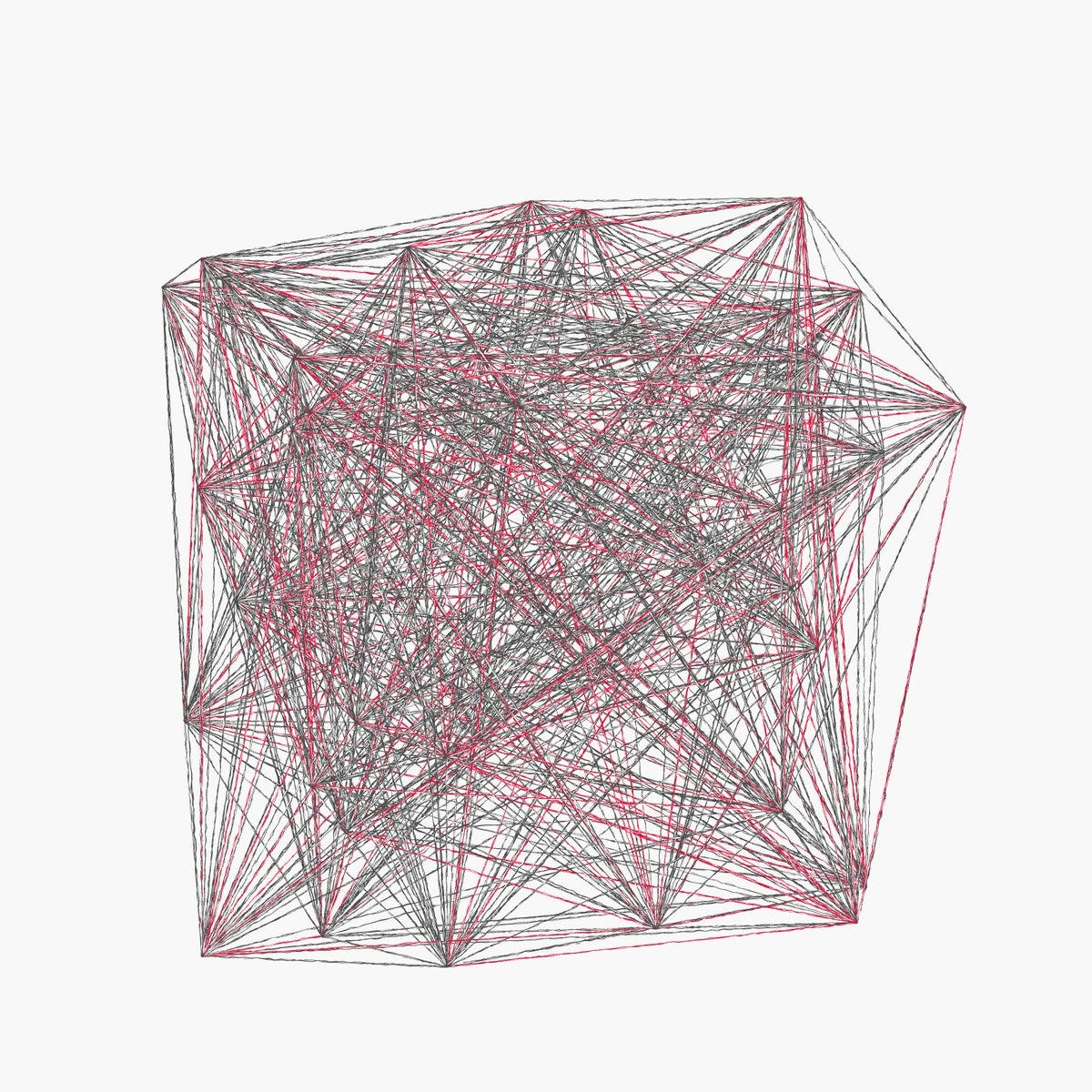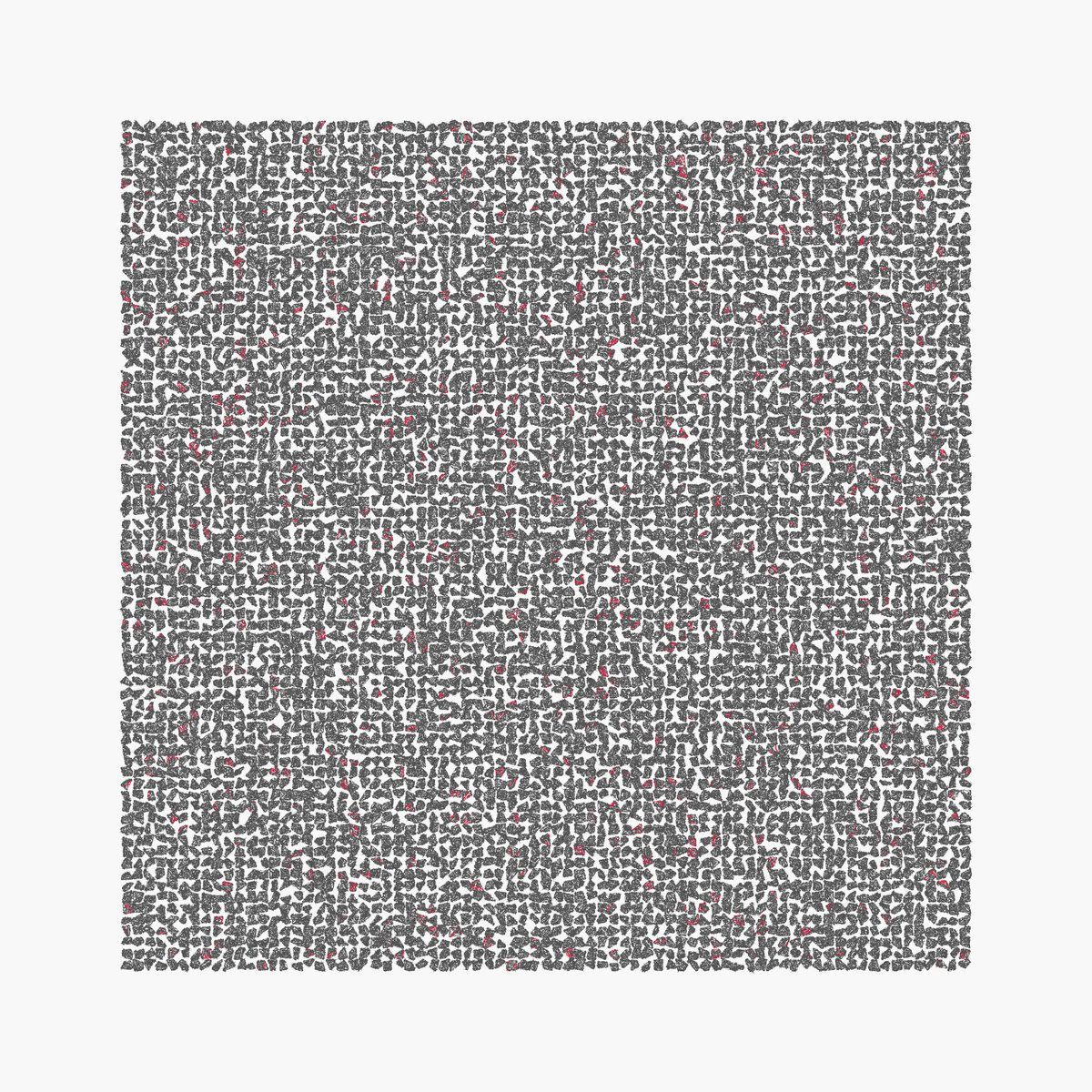LW Art Challenge IX - Results
Discover the signal through the noise in this month's submissions.
Hey there,
It’s time to check out the submissions for LWAC IX. Artists were given the prompt: A signal through the noise. This is a theme I was thinking about as I enter the next phase of a personal creative project and, as usual, I wanted to extend the invite to artists to interpret the idea in their own way. These works do not disappoint!
Often, an interesting aspect of these challenges is that we’ll see a common occurence emerge among most of the works, whether it’s a certain color being used or a specific shape. The works created for this challenge don’t have an obvious commonality, which I find really interesting. Perhaps the textures used are generally noisier on average than in other challenges, but that might be a stretch.
There are many angles that can be taken to express a signal through noise. Let’s take a look/listen💥📡
Featured Works:
A signal through the noise by Michael Hughes
Capturing Energy by Rangga Purnama Aji
Finishing Should Start by Lin Xir Wengi
Signal by DBB
[WIP] by lukaszgraphz
Where there is dirt, there is a system by LoneWick
Michael Hughes
‘A signal through the noise’
This captivating piece by Michael Hughes is such a treat. So far, all of the pieces he has made for previous challenges have been ~2-second GIFs that are cut from just the right moment of a longer video. Those are some of my favorite pieces by him. In this one, however, he gives us a glorious 20-second ride through a blood red noise texture that rises out of nowhere and disappears in a descent of the same nature.
The stark contrast of reds on a pure white background is one of the cleanest I’ve seen from Michael. It is very effective at grabbing your attention and keeping it. There is a closeness that grabs you and makes you feel like you’re in a tsunami. An aspect I really like is how the overall texture gives the impression of liquid, while at the same time a sharpness is revealed in the particles that make up the aggregate. We get this great fast and slow movement all at once as the aggregated texture gradually turns and the particles go zipping by.
One could see the white as the signal and the red stuff as the noise. Or maybe the aggregate as the signal and the details as the noise. Michael is an artist who always leaves the interpretation up to the viewer and I absolutely respect that.
How do you see it?
Rangga Purnama Aji
‘Capturing Energy’
Rangga made an entire generative collection out of the prompt that is both recognizable and original in the context of his previous generative works. Here, he creates symmetrical outputs with a cycle of colors. There is a cage-like feel but the bars are connected by changing colors along with the shape that appears to be contained.
The visual accompanied by the description gives an overall sense of navigating chaos, extracting meaning from what seems like randomness, or molding scattered fragments into something coherent. A full image, something clear, comes into view. He asks us to see the signal by perceiving what is truly important among the constant disruption of a noisy world.
A powerful message and gorgeous imagery.
I’d love to see more mints come out (only 2 Tez!) so we can see how the algorithm expresses itself.
Rangga’s description:
“The hidden motion pattern may be discovered through all the various saturated stimuli within the surroundings, where all those motions lay the energy flow within. Capturing and ensnaring them might be necessary to collect, process, and condense them into one strengthening power. Comprehending the subtle-complex way to perceive things within the sea of disruptions. Dare the perceptual "self" perceiving.”
How do you interpret this?
Lin Xir Wengi
‘Finishing Should Start’
I am endlessly fascinated by the foil work of Lin Xir Wengi. I’ve never seen anything like it. The scanned textures translate really well into the digital realm and the light contrasts only accentuate it.
Her piece for the challenge, Finishing Should Start, needs no explanation as it visually presents the prompt in a clear way. We see a clearer version of the shape sort of being uncovered. It looks almost as if the piece is inspired by the scanning process that created it.
Something I’ve noticed about Lin’s foil work is that the shapes almost resemble a figure from the real world, but always remains fully abstract. That’s an aspect that always holds my attention. I also appreciate the general feel of symmetry while not actually being symmetrical.
“Digital collages consisting of aluminum foil and recycled blue paper were scanned. It highlights the wrinkled texture of aluminum foil that was crumpled before the scanning process, and certain elements were manipulated into a bubble-like texture or liquid substance in the digital process.”
How do you feel about the piece?
DBB
‘Signal’
DBB’s piece has an almost spiritual feel to it. We get a face with a meditative expression emerging from a noisy texture. In talks with DBB, he mentions that the initial thought that came to mind was the noisy barrage of new crypto tokens dropping and the sense that BTC is like the signal. He decided not to directly represent that in the work, but rather evolve it into the general idea of a solid form coming out of a staticky image. I think the pixelation effect was a great choice as it gives the feel of a bad signal or disrupted transmission. The sound perfectly matches the clarity and distortion in the visual, adding depth to the work overall.
How do you feel about this piece?
lukaszgraphz
[WIP]
I’ve always admired Lukas’s generative work and I was happy that he decided to let me know that this WIP (work in progress) was inspired by the challenge prompt in combination with Sol Lewitt prompts that
started exploring. You can see the clear resemblance to what Amy teaches and the beginnings of a departure into something original. In a chat with Lukas, he says, “I started exploring the prompts with Claude that she created for ChatGPT - which is the example of the single image. I saw your prompt 'Signal to Noise' which pushed me to take the prompt further in Claude to generate the signal in noise matrix.”A detail he wanted to add that he felt might be a bit controversial is that these are primarily coded by Claude, with him making some hand-coded changes/tweaks. “I am truly stunned at how well Claude generates code and it truly now creates signal in noise.” I understand that some consider the use of AI for art and code is wrong or unethical or cheating, or whatever, but that is quickly becoming the reality and I fully support the use of new tools that make it easier to do baseline work faster than we could before. A new baseline will eventually come to surface and with that will come further advances and original expressions beyond that baseline.
Great start, Lukas! I’m very excited to see where this leads.
What are your thoughts?
LoneWick
'Where there is dirt, there is a system'
This piece was composed for an instrument, or rather an approach to an instrument I call impossible piano. The prompt “A signal through the noise” is a generalized version of the quote by Peter Sloterdijk, “Where there is noise, there is a system. The missteps and byproducts betray a deeper mechanism at work.” The concept and sentiment directly relates to the larger conceptual idea of an ongoing project you’ll see manifesting through these challenges.
This piece will begin as very difficult on the ear as it hits you with what feels like chaotic random stabs at the piano. The hope is that you will allow yourself to get through it and make it to the end while picking up on clues subconsciously, then listen a second time and pick up on more clues. Of course, that is a rare thing for someone to do on their own with this kind of music, because most of us don’t typically subject ourselves to active listening when it comes to music. It is most often experienced as a passive act in favor of a consistent beat. Nevertheless, I’m compelled to write this stuff for myself, particularly as it relates to a larger evolutionary project that goes beyond the means of the work itself, and the handful of people who possess the desire to listen with intent or at least find enjoyment in letting the general attitude wash over them as if to paint their temporary sound space in whatever favorable hues they associate with the music.
A helpful nudge is called for, even for the most astute observer. So here it is:
There are three main elements happening in the piece. We have the (1) set of harmonies (or chords) in what we’ll call the ‘home key’ that begin in the upper register right at the beginning over the top and in between specific rhythmic cracks of the (2) broken, complex texture that starts in an impossibly low register, which uses the leftover tones (from the 12-tone system) that are not included in the ‘home key’. Eventually, the signal (3), which is already present from the beginning, becomes more clear throughout the piece.
Element 1 happens a few times in a start and stop manner with some variation for storytelling, to anchor the listener, and to give balance. This character, as we might call it, sits in the middle register that is most comfortable to the human ear and therefore most likable.
Element 2 is a pattern of pulses grouped in phrases that alternate in chunks of four and five. This makes up one larger gesture that is repeated three times throughout the piece, which gradually rises in pitch (register) and wraps around Element 1, going from impossibly low then repeating in an upper register that becomes impossibly high. You hear the first repetition of this around 0:21 when Element 1 begins again. After this, you hear a descend begin. This is the larger gesture repeating again, only in retrograde (backwards) and accelerated, which ultimately lands in one last repetition in the original direction, except this version is converted to the tones of the ‘home key’.
An interesting aspect to note is how different the larger gesture sounds in the lower register vs the higher register. In the lower register it is muddy and seemingly more dissonant, but when moved up to the higher register it is much more pleasant, open, and consonant sounding.
Element 3, the signal, is all the while present throughout, become increasingly more obviously. I won’t mention exactly what it is because you’ll find it. Part of the fun will be in the repeat listen to see if you can discover it earlier now that you know what to look for. Okay, a hint: this is a note that lies outside of the ‘home key’ so as to stand out more prominently to the ear.
Thank you for reading, listening, and looking. I hope you enjoy it.
Thank you
I want to thank you for taking the time to experience the wide range of art created for this challenge. It has proved time and time again to be a lot of fun for the artists, including myself.
If you are able, please consider supporting these artists by collecting their work or by sharing them. They spend a lot of time and effort to create beautiful and provocative pieces for us to enjoy, to help us see things in a new light, to find a sense of connection, and at the very least, provide an escape from daily life.
If you enjoyed this and would like to see more art and music stuff, subscribe for free.
-LW❤️🔥






